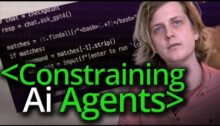What is a Passkey? – Computerphile
From Computerphile. Passkey pop up everywhere, Mike Pound explains what they are! Check out Brilliant’s courses and start for free at https://brilliant.org/computerphile/ (episode sponsor) — More links in full description below ↓↓↓ Dr Mike Pound is based at the University of Nottingham. Computerphile is supported by Jane Street. Learn more about them (and exciting career…







